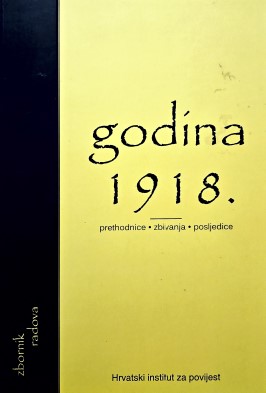Slušanje dobroga ili zlog anđela: Svibanjska deklaracija 1917. i propast srednjoeuropske Monarhije
The May Declaration. The Role of the Catholic Circles in the Creation of the First South-Slavic State
Author(s): Jure Krišto
Subject(s): Diplomatic history, Political history, Government/Political systems, Military policy, Politics and religion, Pre-WW I & WW I (1900 -1919), Inter-Ethnic Relations
Published by: Hrvatski institut za povijest
Keywords: May Declaration; reform; Monarchy; clerics; Slovenes; Yugoslavia; Yugoslav Committee; law; Stadler; Bosnia and Herzegovina; movement;
Summary/Abstract: Before the beginning of WWI, Croats, Slovenes, and other Slav peoples of the Austro-Hungarian Monarchy were clearly dissatisfied with its dual organization, which privileged the Germans and Hungarians. Croats were also frustrated because while Dalmatia and Istria administered by the Austrian part of the Monarchy, Croatia-Slavonia were under the Hungarian part of the Monarchy, and Bosnia and Herzegovina were under the governance of the common Ministry of finances. It is therefore not surprising that several proposals for the reformation of the Monarchy had been put forward by the South Slav politicians, nor that all of them called for the unification of the Croatian lands. Three years into the war, the Yugoslav Club of the Emperor’s Council issued on May 30, 1917 a declaration that requested the formation on the territories inhabited by the Slovenes, Croats, and Serbs of an independent state, but under the Hapsburg scepter. The request was made on the basis of the national principle and the Croat state right. The May Declaration initiated controversies among Croatian politicians and political parties, but it also began a movement to accept the program of the Declaration. The most enthusiastic supporters were the leaders and the membership of the Catholic organizations. The author highlights the political situation that led toward the issuing of the Declaration, the controversies that surrounded its promotion, and its political consequences. In the end, he draws two conclusions.
Book: Godina 1918. Prethodnice, zbivanja, posljedice
- Page Range: 73-87
- Page Count: 15
- Publication Year: 2010
- Language: Croatian
- Content File-PDF

